A Team Charter is a document developed by a team in support of a project.
It shows how they’ve all agreed that the project will be accomplished, states the team’s objectives, looks at available resources, and assesses potential obstacles.
As the team develops the charter together, it can help build trust among the team members. In addition, developing it gives the team a common goal and can lay the groundwork for success. It defines roles and responsibilities for each team member. The objectives of the project are laid out clearly. Also, it informs non-team members about what responsibilities the team holds in their work on the project.
A team charter creates a structure of accountability that creates transparency and a high level of trust. The team must agree on how decisions will be made and how often they will meet. These charters have also been found to contribute to successful collaborations because they clarify expectations for all team members. In addition, it can help prevent problems from arising.
Experienced workers might not think they need it. However, your perception of your team’s goals may be considerably different from your teammates’. It is a way to gather all the team members’ ideas. You all build the charter together, and this way, you know that the entire team is invested. One valuable aspect of it is that it is not made by management. There is no top-down issuance of orders. Each team member’s input is valuable.
Team Charter Templates
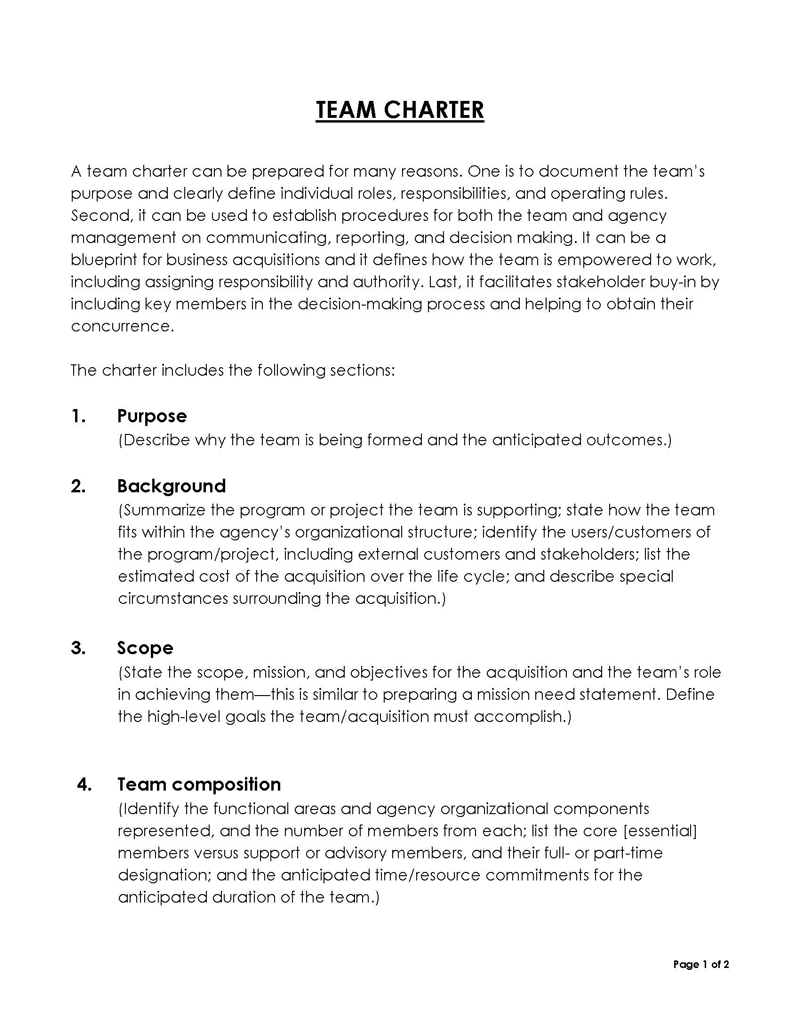
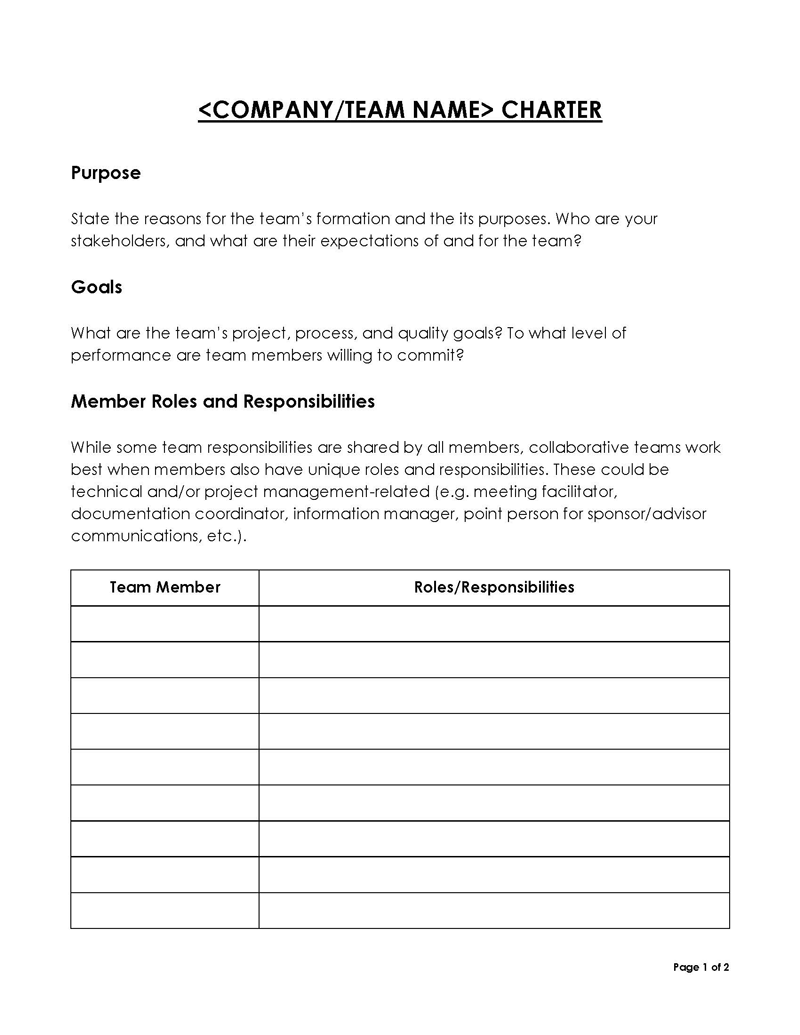
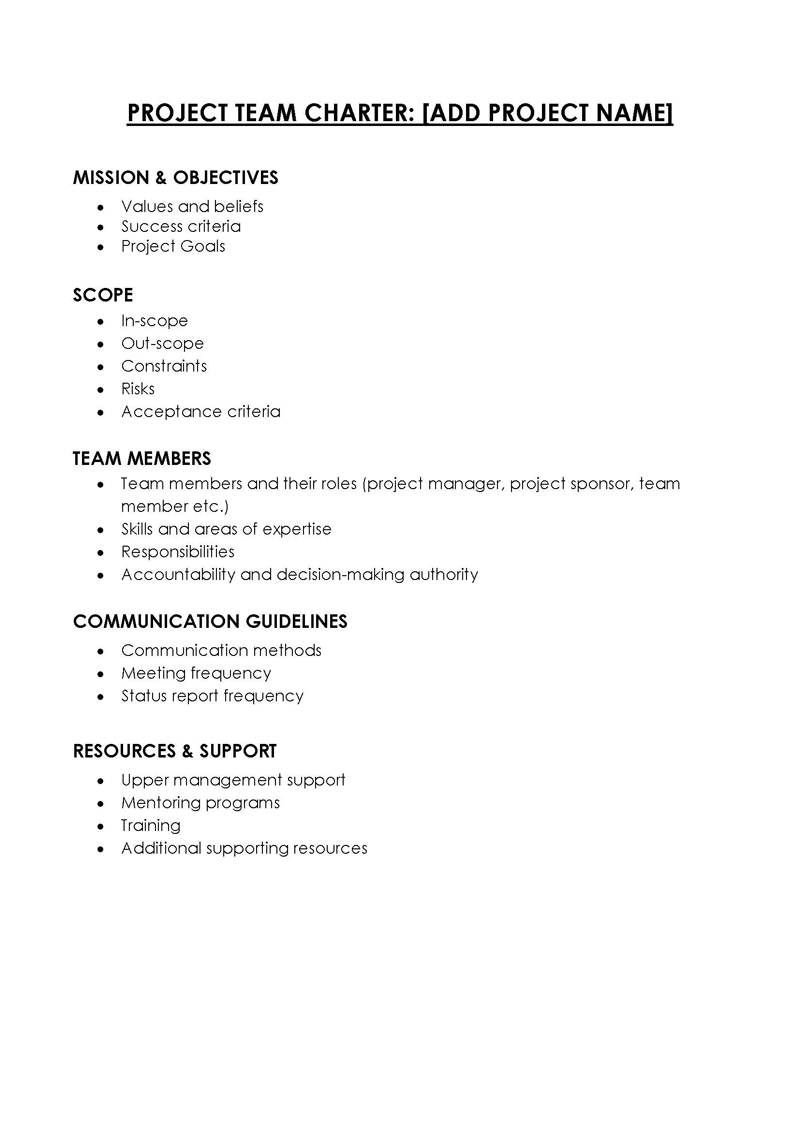
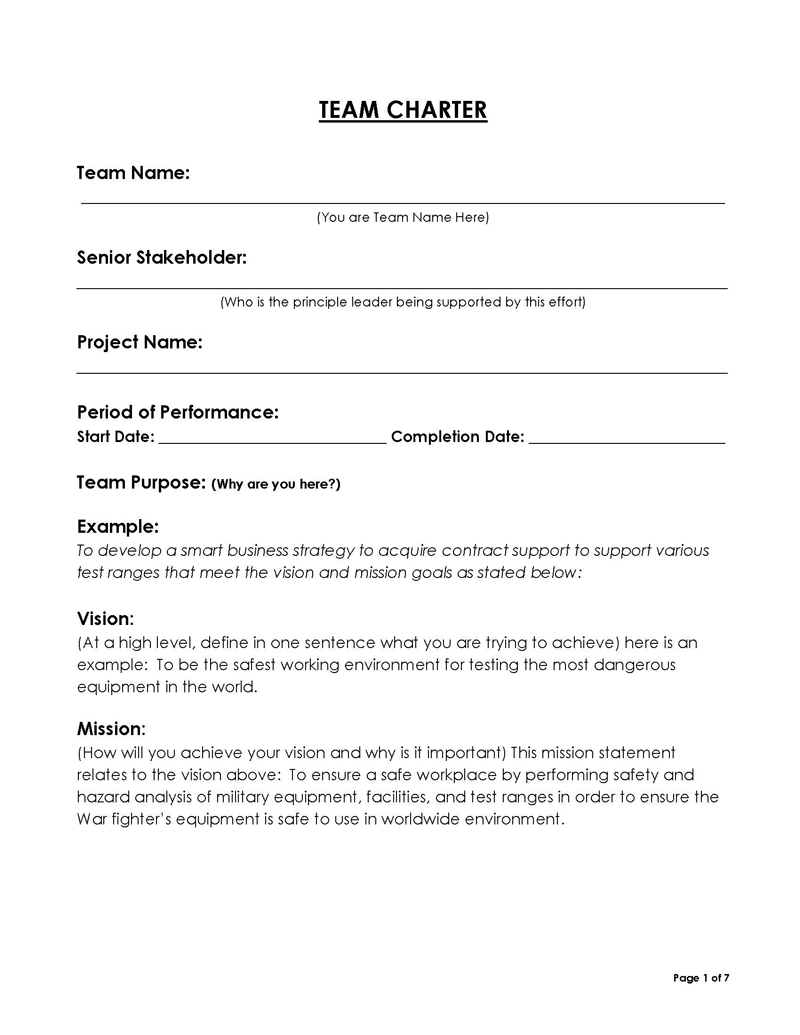
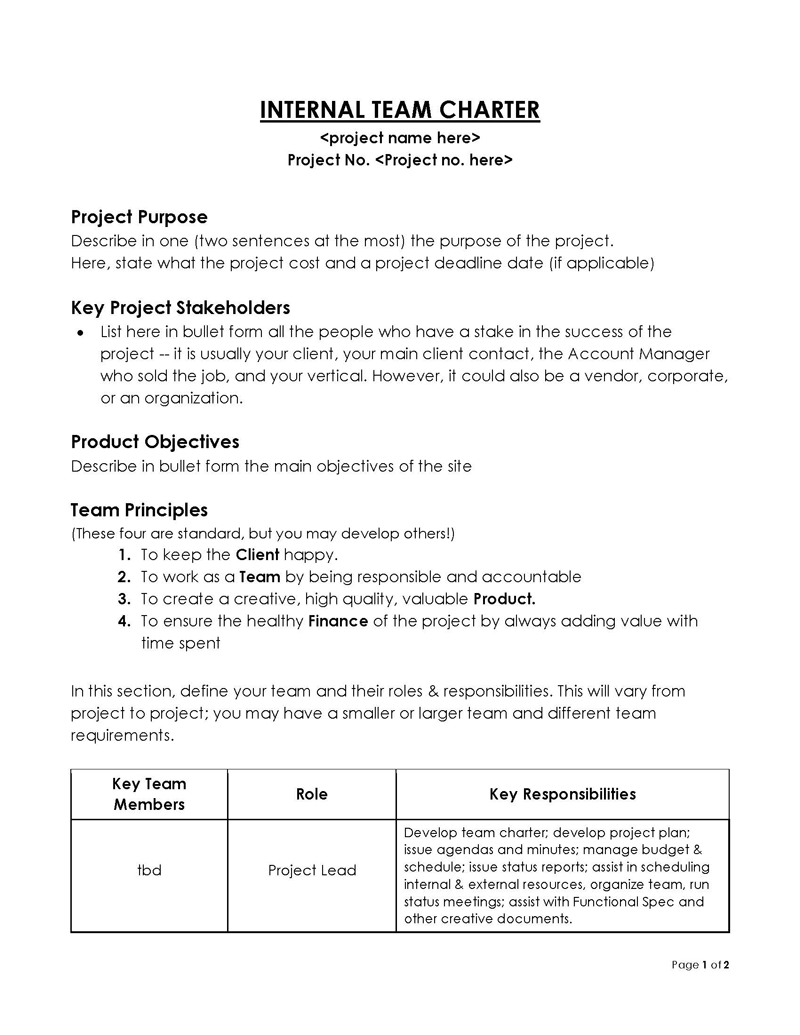
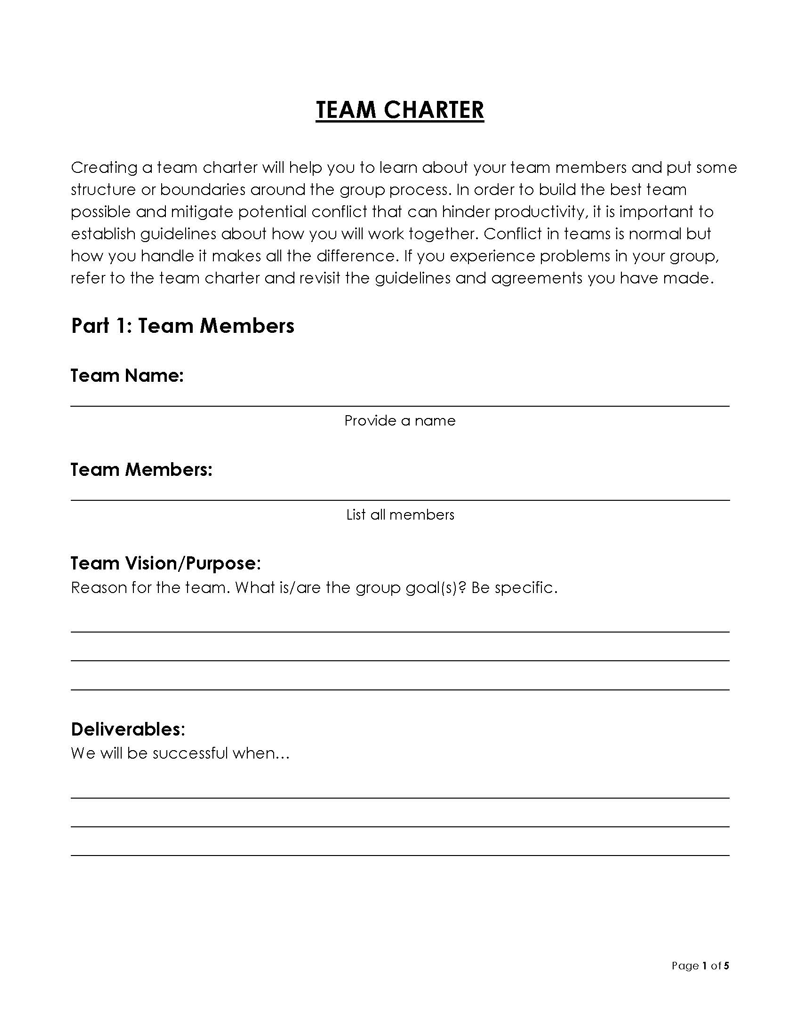
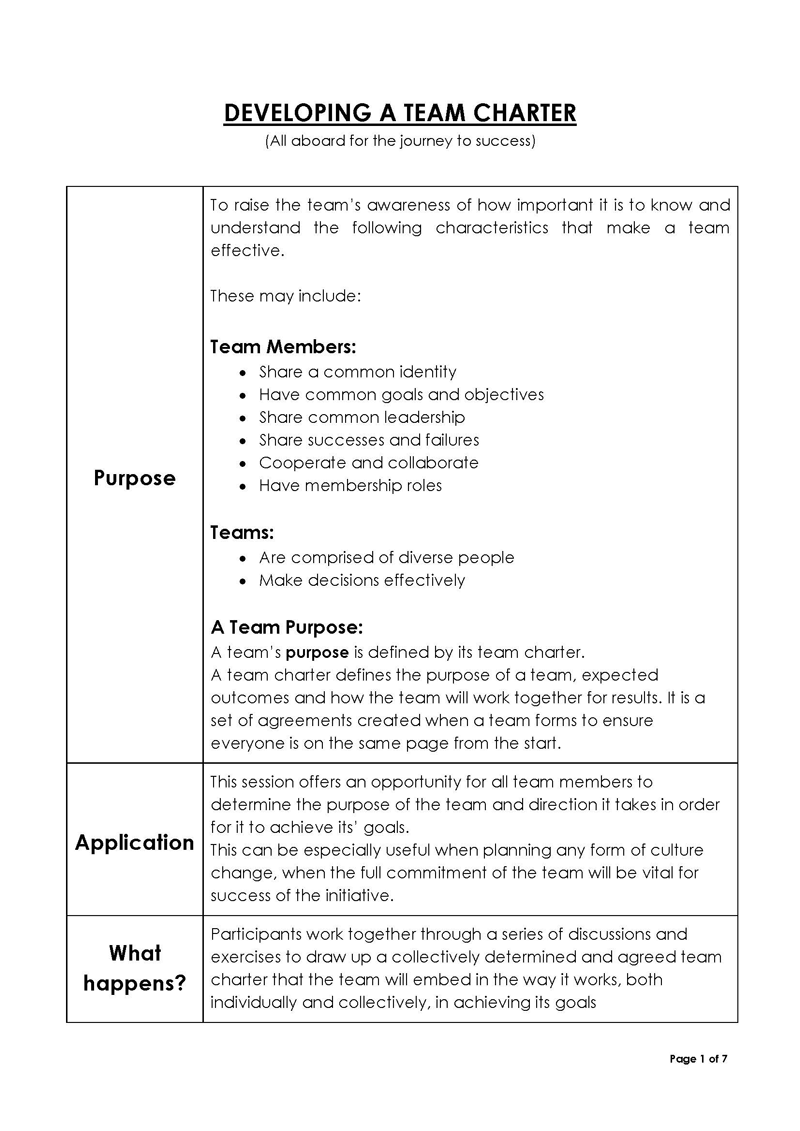
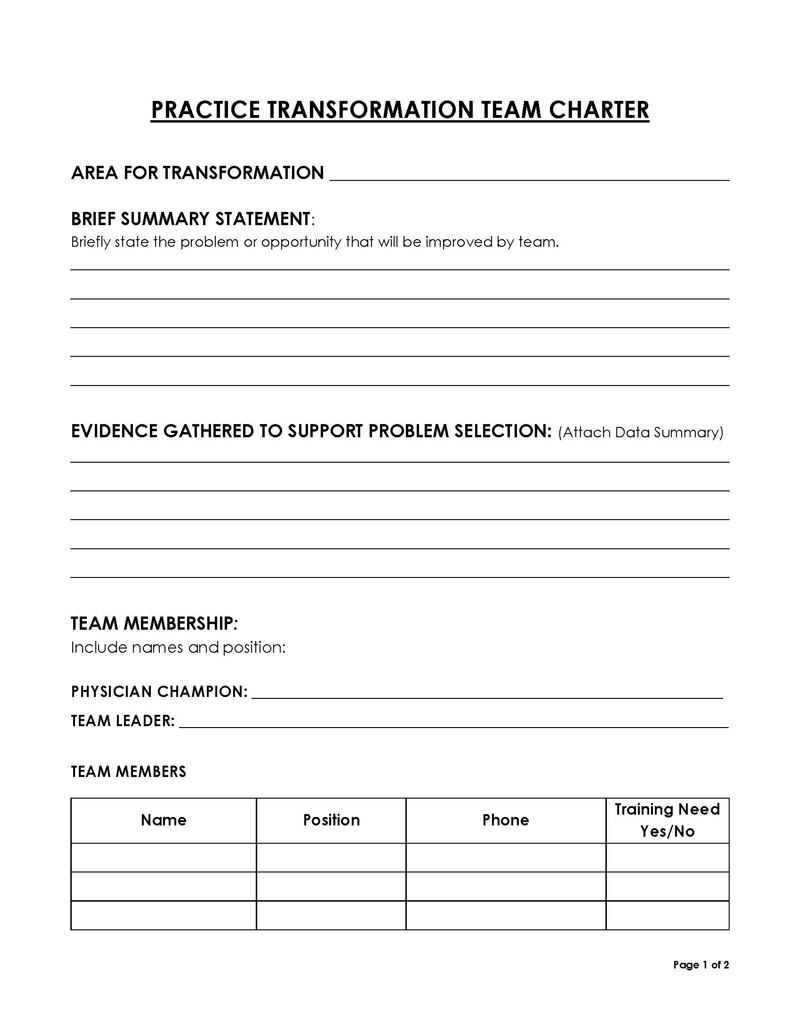
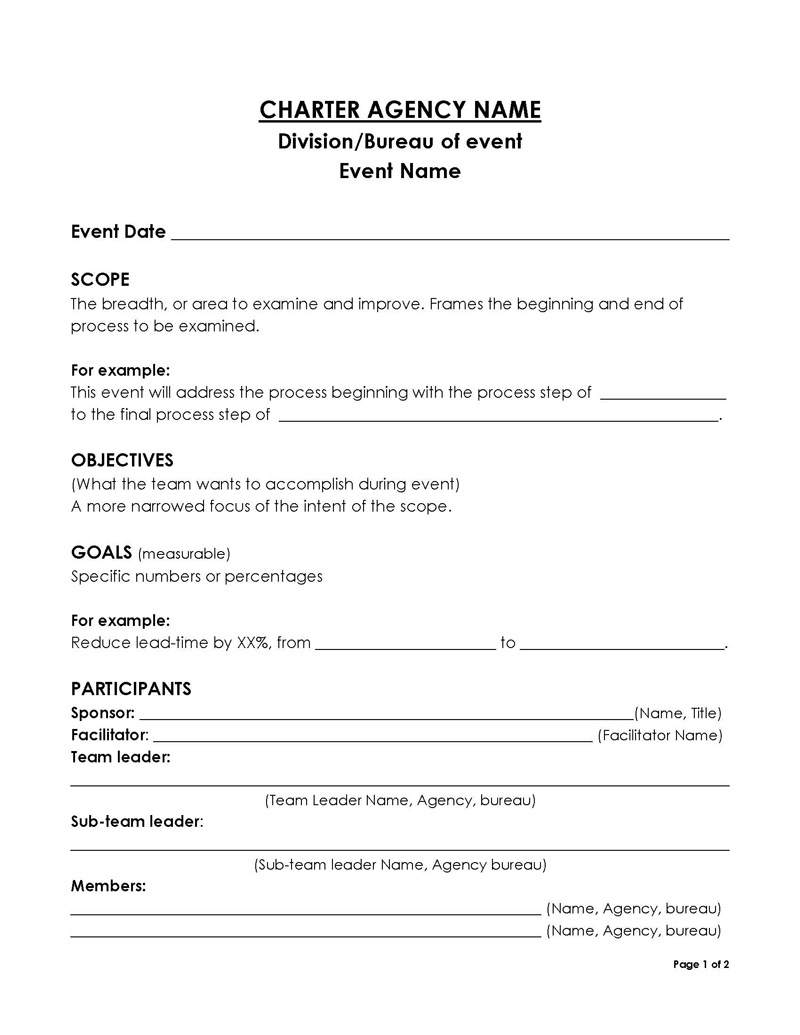
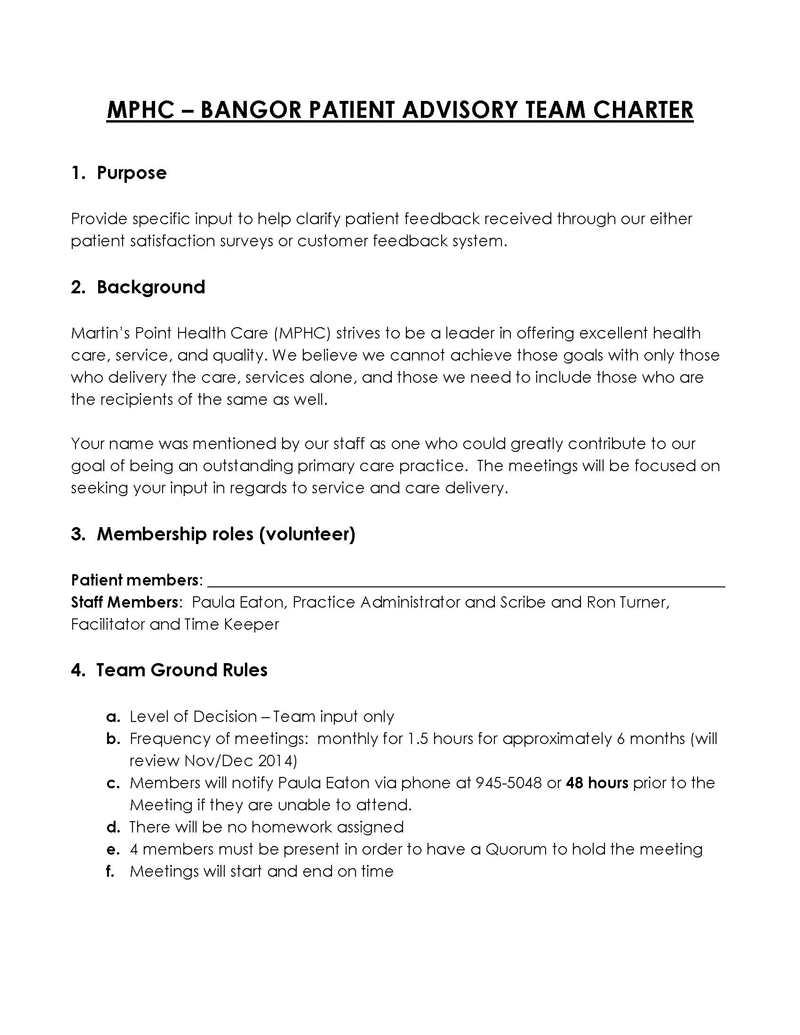
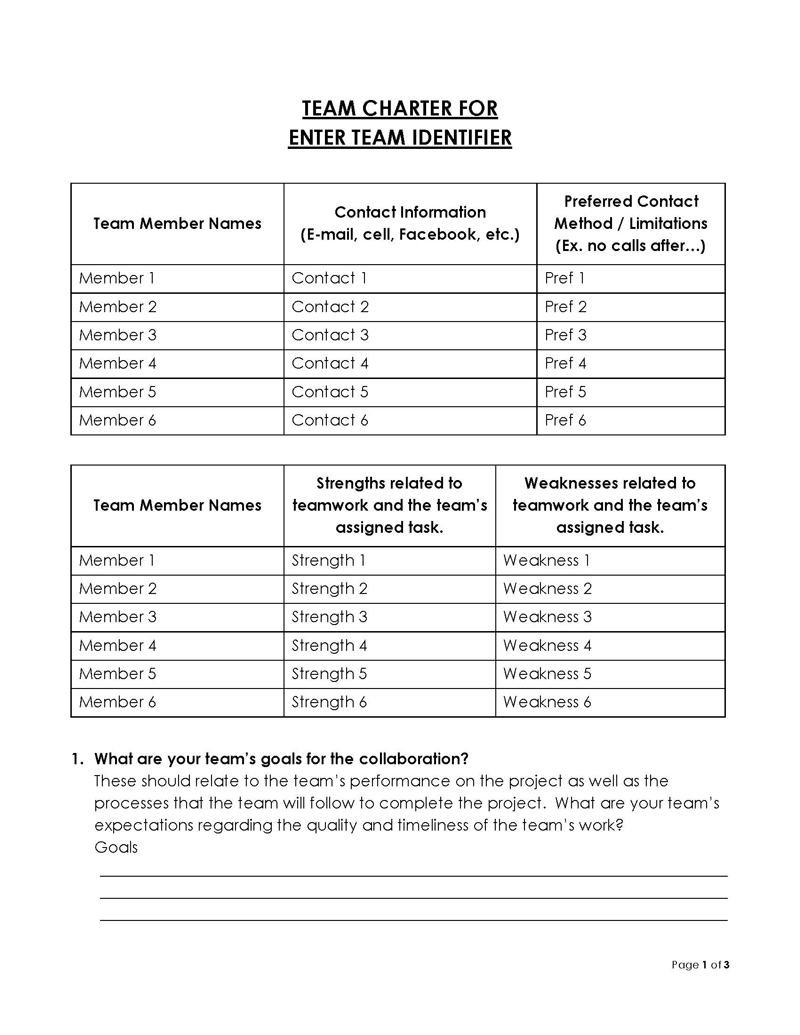
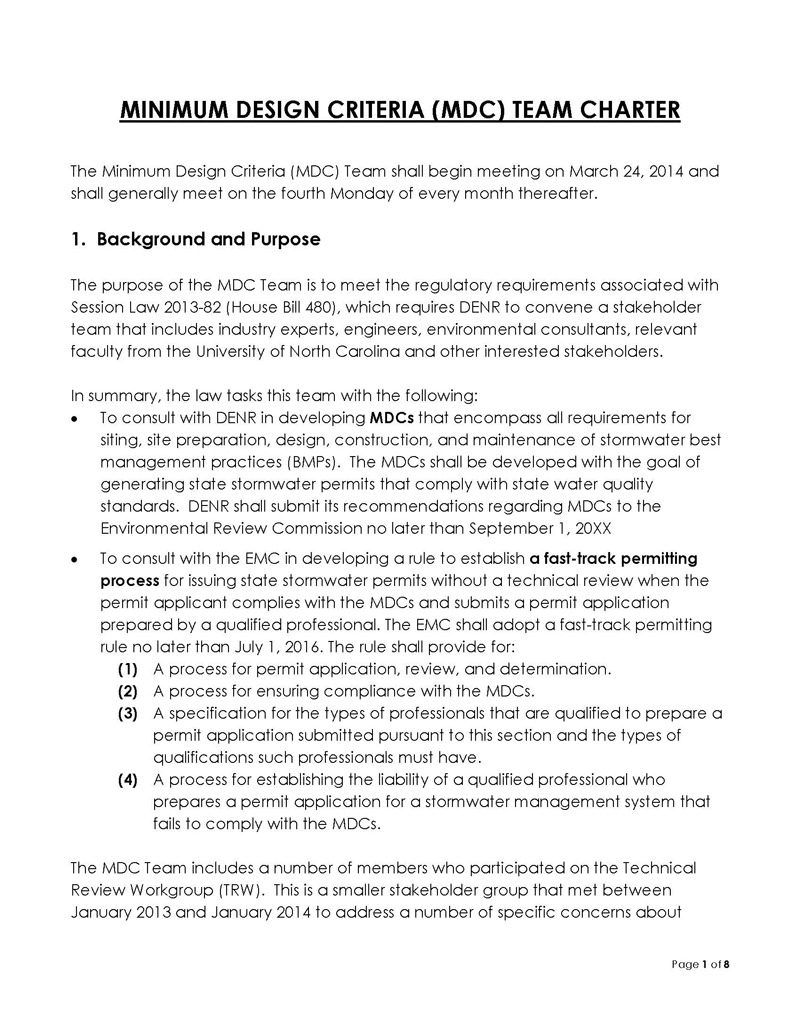
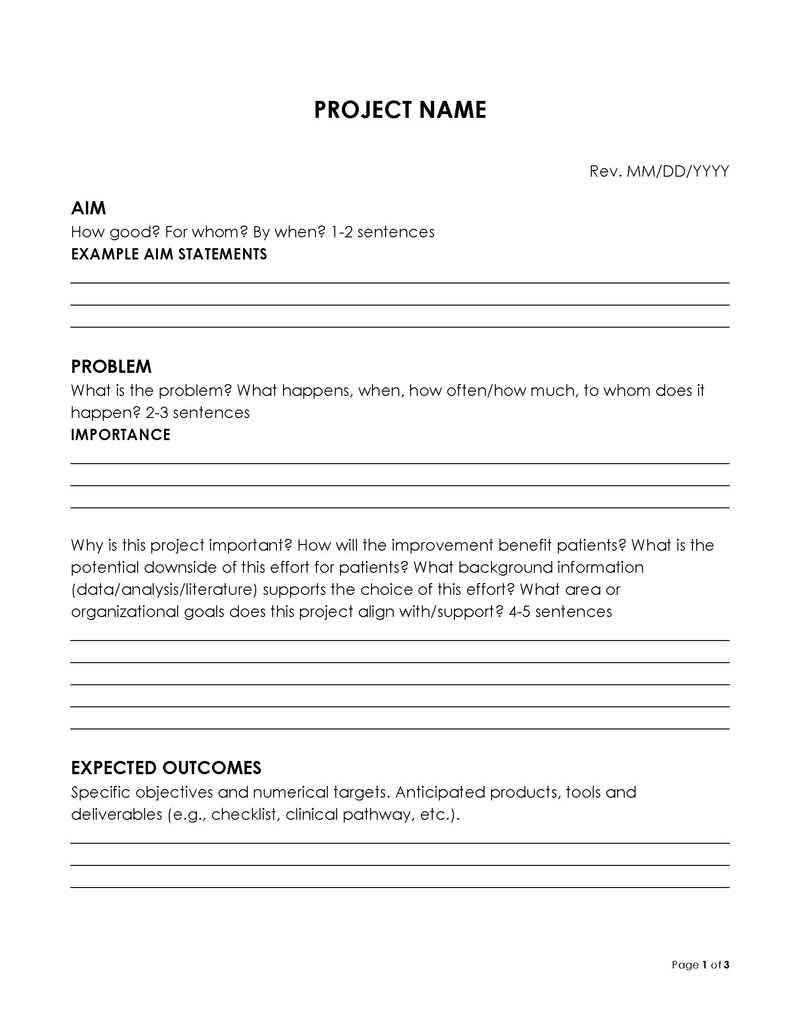
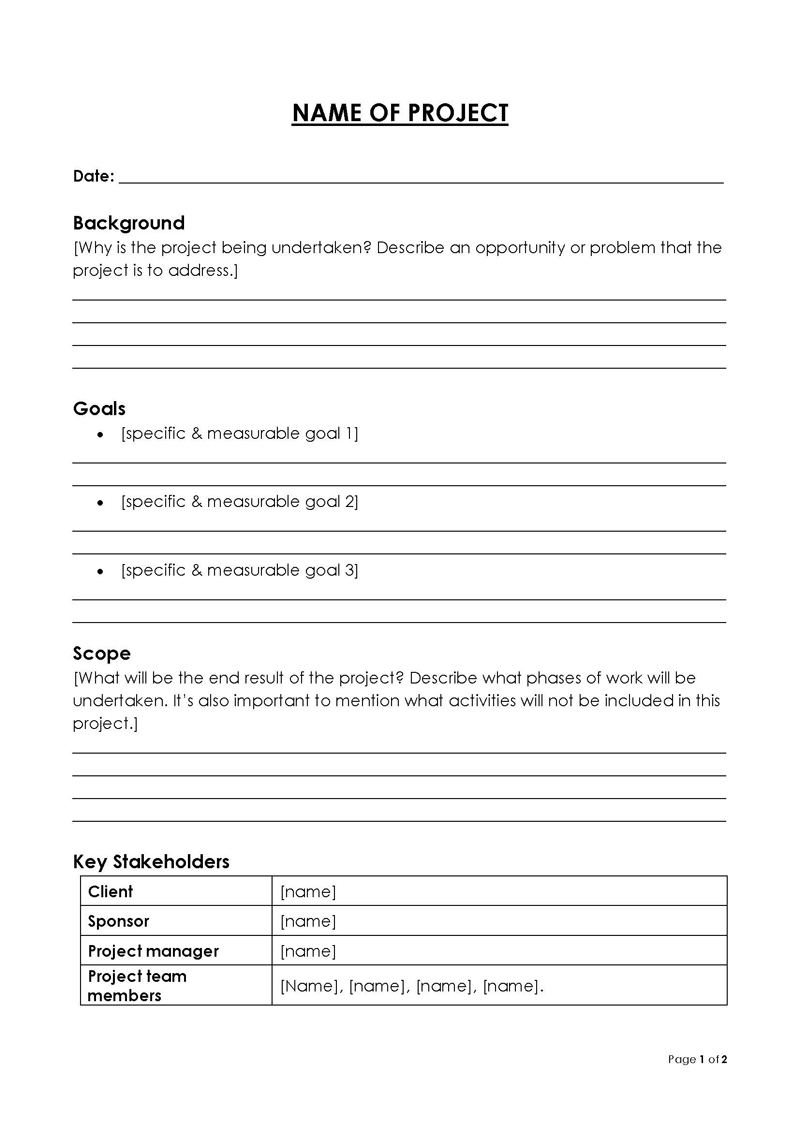
Making a Team Charter
There are many steps involved in creating it, and these can change depending on the specific project.
But generally, the components listed below will make it up:
Start with the context
Why is this project being undertaken? The team will need to review the overall objectives to answer this question and create a background summary for the project. The team should identify stakeholders who care about the project’s outcome.
Define your mission and objectives
A mission statement will take the background summary and further define the goals of the project. This way, it will be clear from the start what each task will do to support the plan. Then, look at the big picture and state the project’s benefits and how this will help the business or organization.
Once the mission is clearly defined, set interim goals with goals that should be met along the way.
Define your budget and resources
Your project’s success depends on getting the people, materials, and equipment needed to meet your goals. A budget will help obtain those resources. It can be a headache to plan a budget. However, it will also give the team confidence to know that enough funding is needed to meet the project’s objectives. If the budget needs to be adjusted, it’s best to find out at the beginning of the project.
Funding can be approached top-down, based on a fixed amount, or bottom-up by looking at the project’s line-items and determining those costs. Any training required by the team to complete the project must also be detailed in the charter. Team members can be informed if they need to participate in training. In addition, the management in support of the team will be identified. That way, members know whom to contact with questions about expenses and costs for the project.
Describe the roles and responsibilities
Defining responsibilities in it is vital for the project’s success and in support of specific goals. Each team member will learn about their role in the project and the duties entailed.
Make a note of individual skills and areas of expertise that will be useful during the project. Then, assess whether your team has enough person-power to do the work and meet the deadlines. Make sure to allow for time and funding for training.
Being diligent in this area will bring great clarity and help the team see if any deficiencies need to be dealt with before the project is underway.
Outline the team’s operational structure
Outlining the operational structure in it will help the team to work together effectively. The operational structure is a map of how the work will get done. Creating consistent processes and procedures will help the team to be productive and stay on schedule.
First, identify activities that occur frequently. These can be progress updates, meeting guidelines, work distribution, conflict resolution processes, internal and external communications, and policies for decision-making.
If a new member joins the team, their role must be clearly defined. Likewise, team members who are leaving should work with the team to develop an effective exit strategy.
Research shows that teams that aren’t organized can become stuck and even counterproductive. An agreed-upon operational structure will get all team members on the same page and get everyone working together productively.
Having this kind of structure frees up the team to focus on the project itself, increasing the likelihood of success.
Outline the project’s scope
Defining the scope of a project means stating what is and is not part of the project. A scope statement helps make sure the project’s scope is delineated for all team members.
By outlining the project’s scope, the team will see things at a very detailed level. Specific project goals, deadlines, tasks, and costs are all outlined. The work that must be done to achieve the project’s goal is recorded in black and white.
By declaring the project’s scope early on, the team will have the best plan made both from a time-management and cost perspective.
The team will need to:
- Define the product requirements
- Define the process requirements
- Involve stakeholders
- Identify limitations
- Find the correct management
By defining the scope, team members will plan for scope creep, which is a common phenomenon. Scope creep refers to how a project’s requirements can increase throughout the project’s life. It can be caused by miscommunication, the changing needs of clients, or stakeholders changing requirements. Scope creep can lead to delays and funding issues.
Change is inevitable, but the clarity of scope will help the team ride out the changes with grace.
Set performance assessments
The performance of team members will be assessed throughout the project, and the assessment methods will be communicated to the team before the project is underway.
The team should discuss how performance assessment for the project will tie into annual reviews and bonuses, and job objectives as a whole, and how to measure when expectations are met or exceeded.
Team members may also want to add self-evaluation and peer evaluation to the assessment process. Data from assessments can be gathered, which can help with team training and future projects.
Create deadlines and milestones
The charter will also include deadlines, goals, and milestones. A milestone is a scheduling tool that is used to mark a point in the project’s schedule. For example, both the start and finish are milestones, and another could be the completion of a phase of work.
Milestones help to break the work of a big project into manageable parts. This helps with planning, scheduling, and execution. Milestones help to accurately estimate how long it will take to complete aspects of the project. They help segment the project timeline into smaller timeframes, enabling the team to control it better and track progress.
Decide the method of communication
Along with their manager or team leader, the team should discuss and agree upon how they communicate during the project’s lifespan. Project status reports should be made periodically. This will help maintain the project’s schedule and keep everyone on the same page.
A project status report can include what work has been done, a plan for upcoming work, a summary of the schedule, budget status, problems and how they’re being handled, and action items.
The frequency of status reports, emails, meetings, and group video calls should be decided.
Obtain signatures and approvals
Once the team has agreed on the contents of the charter — and it’s clear that everyone understands their role and the project’s scope – all team members will sign and date the document.
An Example of a Team Charter
The Iowa department of public health recently used a charter to improve processes for licensure. The goal was to issue a new mental health practitioner license within 3-5 days of receiving all the paperwork required for licensure, with at least 90% customer satisfaction.
The IDPH charter includes scope, objectives for the team, goals, participants, pre-work, non-negotiables, and follow-up dates. The team goals were specific, and follow-up dates were at 30, 60, and 90 days, six months, and one year.
The charter required the team to look at how long it took to process applications and how many applications were received at different times of the year. In addition, they planned to obtain feedback from customers.
Frequently Asked Questions
It should be updated when a project plan has changed enough to impact the original guidelines.
Another time to update it is when a new team member joins or when someone leaves. You will want to review it with any new members to make sure they understand the project’s scope and get their input.
For best practice, the team needs to be fully involved in the composition of the charter. The input of each team member will help to ensure the best outcome for the project.
It should explain the team’s purpose clearly and thoroughly, with measurable goals, assessments, and operating guidelines.




